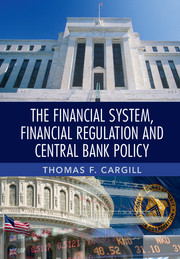Japan since 1980
This book tells the story of the performance of Japan’s economic and political institutions starting in the late 1970s through late 2007. The authors explain how Japan’s flawed response to new economic, political, and technological forces requiring more open markets and more democratic political institutions ushered in a “lost decade and a half” of economic development from 1990 to 2005. Japan’s impressive economic performance in the 1980s in fact masked an “accident waiting to happen,” the accident being the burst of the bubble in equity and real estate prices in 1990 and 1991. Japan’s iron triangle of politicians, bureaucrats, and client industries, combined with a flawed financial liberalization process and policy errors by the Bank of Japan and the Ministry of Finance, brought Japan to an abyss of deflation, recession, and insolvency by the late 1990s. The turning point was the election of Koizumi as prime minister in 2001. Koizumi took advantage of important institutional changes in Japan’s electoral system and policy making and implemented many changes in economic policy. The book explores Koizumi’s economic reform, new developments in Japanese people’s socioeconomic conditions, the politics and economy after Koizumi, and the economic and political challenges facing Japan in the new century.
- First book in English to systematically analyze Japan's political and economic changes from late 1990s to 2007
- Benefits from analysis from perspectives of both economics and political science
- The first book in English to systematically discuss Prime Minister Koizumi's role from 2001 to 2006 and his lasting influence
Reviews & endorsements
“In little more than two decades Japan has traveled a bewildering trajectory from dynamic industrial marvel to financial basket case to reformed but aging post-industrial society. Cargill and Sakamoto integrate politics, taxes and budgetary expenditures, financial and monetary policy, and corporate governance into a remarkably comprehensive explication of this puzzling journey and evaluate prospects for Japan's future development. This will prove a valuable resource for researchers and students alike.” – Gregory W. Noble, Australian National University, Canberra
“Japan Since 1980 provides a comprehensive overview of a period that saw the country fall from ‘model economy’ to one in severe distress and carefully traces the underlying causes as well as the institutional transformation the crisis has engendered. The strength of the book lies in the fact that it combines economic with political analysis, thus providing the nonspecialist reader with an ideal introduction to the issues that have shaped recent developments in Japan and to the formidable challenges it continues to face. The analysis also clearly illustrates that although reform in Japan is often described as progressing at a snail's pace, cumulatively the economic, political, and social changes of the last two decades have led to a substantial transformation of the Japanese economic system.” – Ralph Paprzycki, Hitotsubashi University, Tokyo
“The Cargill and Sakamoto book is a masterful review of the recent economic and political history of Japan. The authors detail the persistent efforts of Japanese policy makers to liberate themselves from past traditions and economic policies that caused the economic downturn of the lost decade. They rightfully advise their readers that this effort is still ongoing, even as Japan faces even more daunting demographic challenges in the future.” – Hal Scott, Harvard Law School
Product details
October 2008Adobe eBook Reader
9780511426766
0 pages
0kg
This ISBN is for an eBook version which is distributed on our behalf by a third party.
Table of Contents
- 1. Introduction and overview
- 2. Economic and political institutions in the 1970s
- 3. The 'high water mark' of the Japanese economy - a 'model' of financial liberalization:
- 1980 to 1985
- 4. An accident waiting to happen - the bubble economy from 1985 to 1990
- 5. Economic and financial distress from 1990 to 2001 and the turning point
- 6. Why did the economic and financial distress last so long?
- 7. Transition of political institutions in the 1990s and the new century
- 8. Political economy of Japan's fiscal program
- 9. Koizumi administration's reform in broad perspective: fiscal consolidation and market reform
- 10. Japan's corporate governance, labor practices, and citizens' social and economic life at the beginning of the new century
- 11. Japanese political economy in the first decade of the new century.






